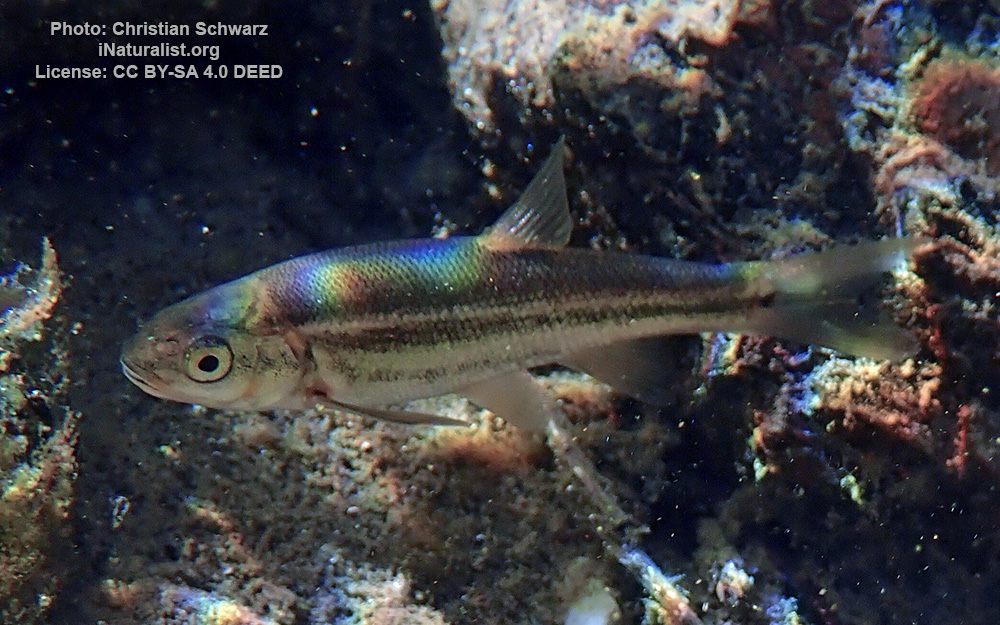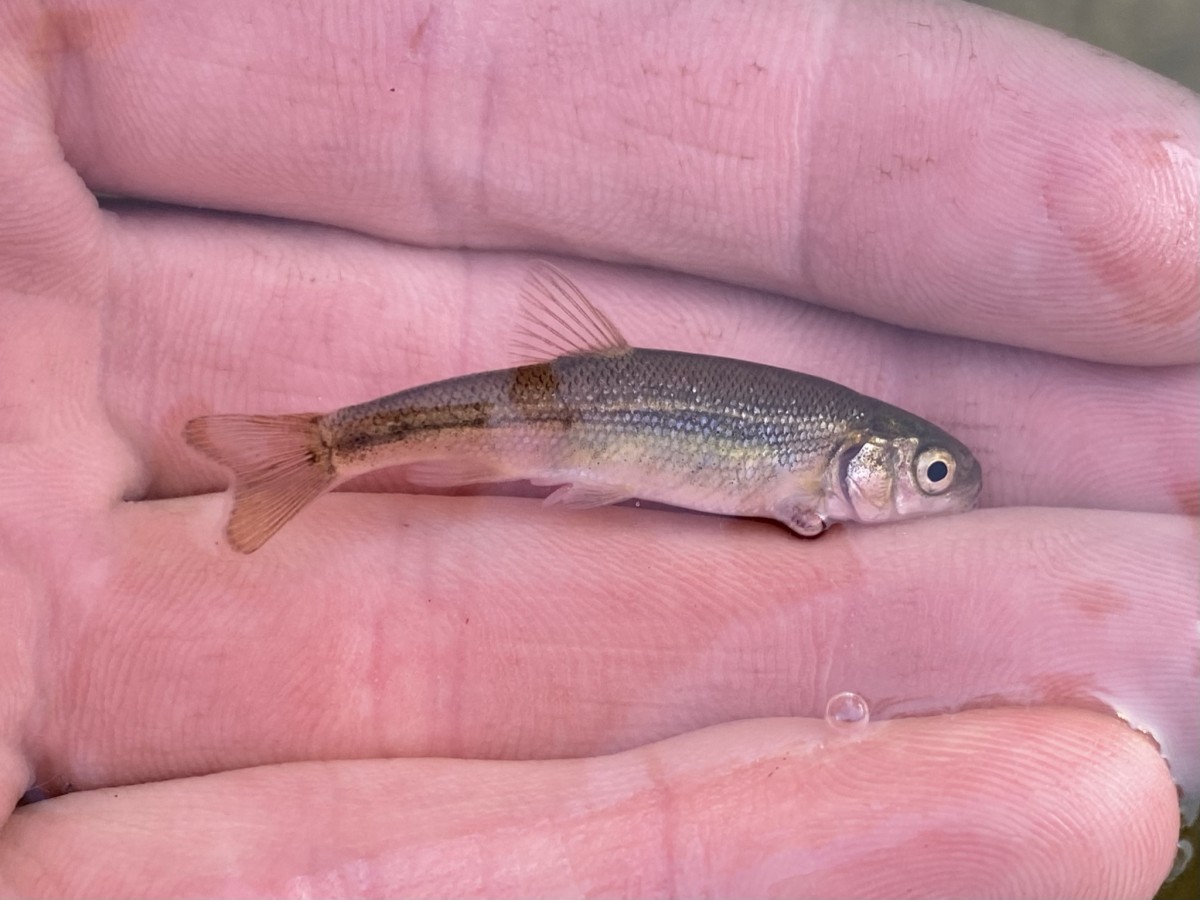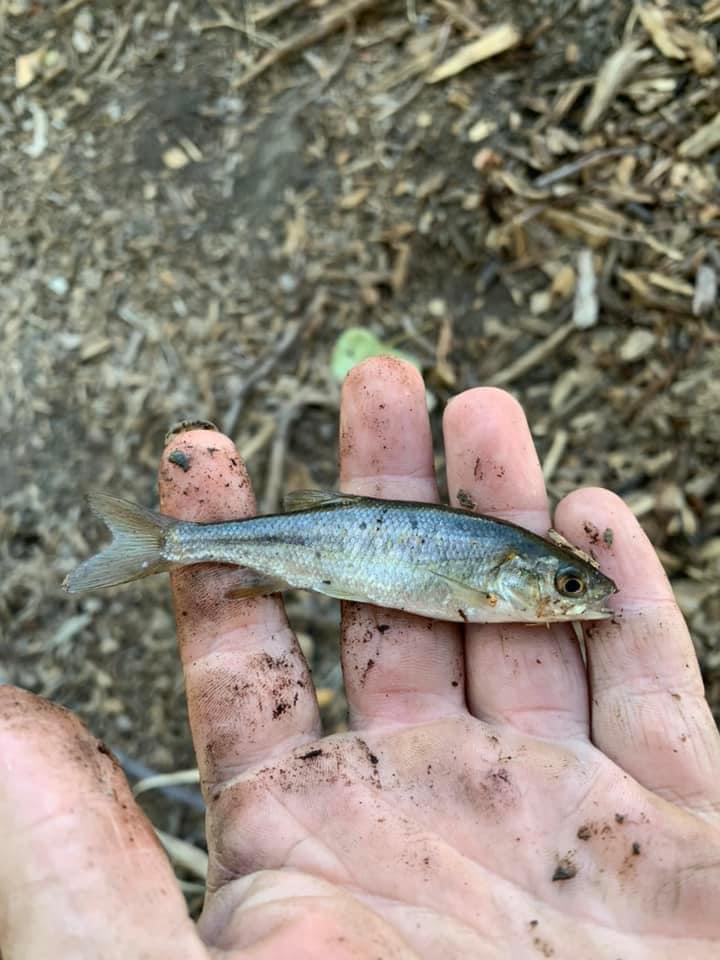California roach
(Hesperoleucus symmetricus)

Image source: Christian Schwarz | inaturalist.org
Classification
General data
The California roach (Hesperoleucus symmetricus) is a cyprinid fish native to western North America and abundant in the intermittent streams throughout central California. Once considered the sole member of its genus, it has recently been split into a number of closely related species and subspecies.
These fishes are of a relatively chunky body shape, with a largish head and large eyes, but a small mouth oriented downwards. The color is a darker grayish-bluish above, and a dull silver underneath. During the breeding season, red-orange patches appear on the chin, operculum, and at the bases of pectoral, pelvic, and anal fins. The smallish dorsal fin has 7-10 rays, while the anal fin has 6-9 rays.
They never get large, the maximum known being about 11 cm.
Mainly bottom feeders, filamentous algae are the main part of their diet, followed by aquatic insects and crustaceans. They will also opportunistically eat insects and crustaceans at the surface. In turn, they are eaten by other fish, in particular green sunfish.
California roaches seem to be resilient fishes that take advantage of the intermittent waters of central California under conditions too difficult for other fishes. As the springtime streams dry up in summer, roaches accumulate in large number in pools, which may be alkaline, hot (up to 95 °F), and low in oxygen. They also seem to cope well with sewage-polluted waters.
The distribution of the species complex comprises the Sacramento River/San Joaquin River drainage, including Pit River and Goose Lake, and many of the small coastal streams (Russian River, Pajaro River, Salinas River, Adobe Creek, Permanente Creek, etc.). Populations in southern California and in Warner Valley, Oregon, may be introductions.












